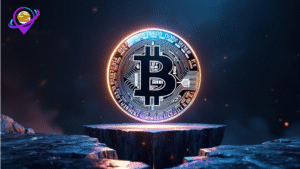The Broken Promise of Fair Launch
When you hear “fair launch” in crypto, it conjures images of equal opportunity and community-driven projects. But looking at the current landscape, I think we’ve drifted far from that ideal. What started as a principle has become more of a marketing term, stretched to fit whatever allocation scheme a project needs to push through.
It’s interesting how Bitcoin gets held up as the original fair launch model. No VC rounds, no foundation treasury, no presale. But when you really examine it, the picture gets complicated. For that first year, Satoshi controlled most of the network—some estimates suggest around 70%. Early mining essentially functioned as a premine, allowing a tiny group to accumulate enormous supply before crypto markets even existed.
Why do we still consider Bitcoin fair? Mainly because Satoshi never moved those coins. No insider cash-out distorted things. But the fixed supply model created its own problems, essentially baking wealth inequality into the network from day one. Latecomers could never stand on equal footing with early miners, and the halving mechanism reinforced this divide over time.
The DeFi Summer Illusion
Fast forward to 2020’s DeFi Summer, and fair launch became fashionable again. Projects like Yearn Finance proudly declared their tokens fairly distributed. Anyone could farm liquidity and earn governance rights. But providing liquidity wasn’t really accessible to everyone—it was more of a financialized business product.
These fair launches proved vulnerable to vampire attacks too. SushiSwap forked Uniswap, PancakeSwap cloned Sushi. Each new fork promised higher yields, rewarding early insiders repeatedly. The whole concept became diluted to mean little more than “we didn’t do an ICO.”
The Current State of Token Distribution
Today, the industry has shifted definitions again. Ethereum’s 2015 ICO raised over $18 million by selling 72 million ETH—more than half of current circulating supply—before any blocks were mined. Solana, Aptos, and Sui followed similar patterns, raising hundreds of millions with large insider allocations.
What’s particularly concerning is how these allocations aren’t counted as inflation, even though they represent delayed inflation that users eventually have to buy out. The threshold for what’s considered “fair” keeps shifting—5% insider allocation is now considered acceptable. But whether it’s 5% or 35%, the principle feels compromised.
What True Fair Launch Should Mean
Fair launch was never really about percentages on a cap table. It’s about alignment of values and whether the smallest unit of contribution gets rewarded equally, regardless of when you joined. In Bitcoin, that smallest unit is a block. In identity networks, it might be a verified human. In other systems, compute or bandwidth.
The real test is simple: does the network treat all contributors as equals in perpetuity? Are equal contributions rewarded equally across time? Are insider allocations zero at the network layer, not just “less than 5%”? Is on-chain inflation inclusive and auditable without off-chain vesting schedules?
By these standards, almost every project today falls short. Presales and foundation treasuries create deferred inflation that users must absorb. Liquidity mining restricts participation to those with capital. Unlock schedules hard-code exit liquidity into the future.
For a truly fair launch, the core protocol needs to stand on its own and deliver genuine utility independent of token price movements. Founders should earn from adjacent ecosystems—services or businesses layered on top—rather than relying on token appreciation. When a protocol’s survival depends on token demand, fairness is already compromised.
Perhaps the most telling point is that networks privileging insiders will always face forking pressure. Someone can always promise a slightly better deal. But when fairness is absolute and product value drives adoption, there’s nothing left to fork against. Communities stay because they’re treated as equals, not because of speculative incentives. That’s the social contract crypto needs to rediscover.






